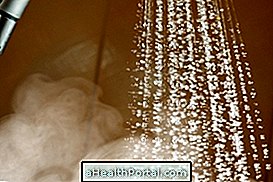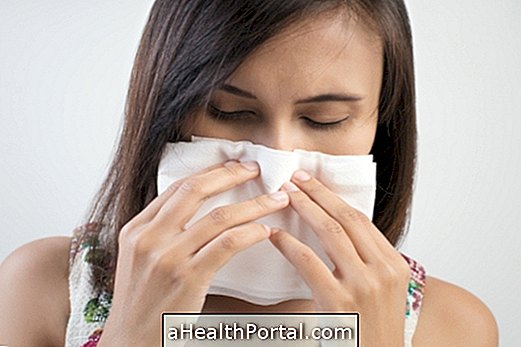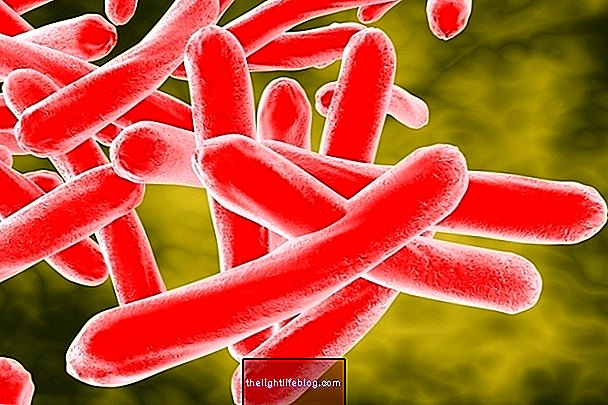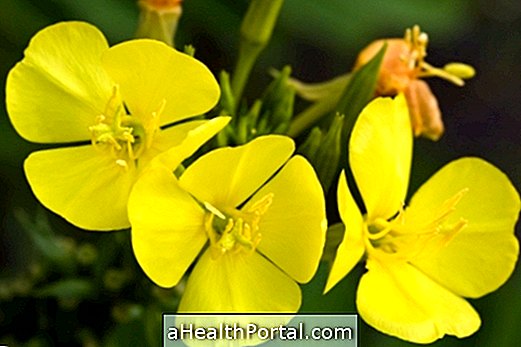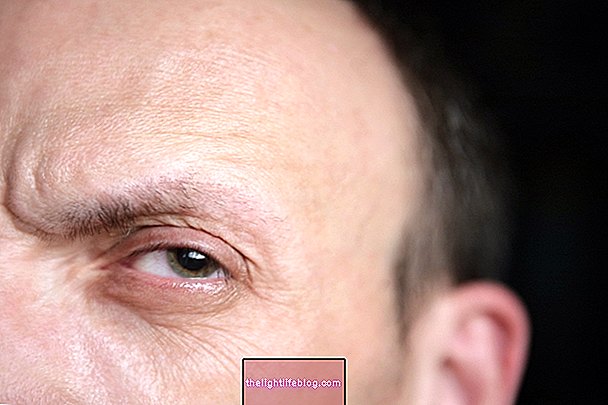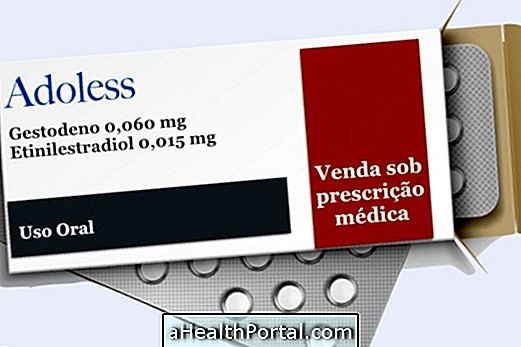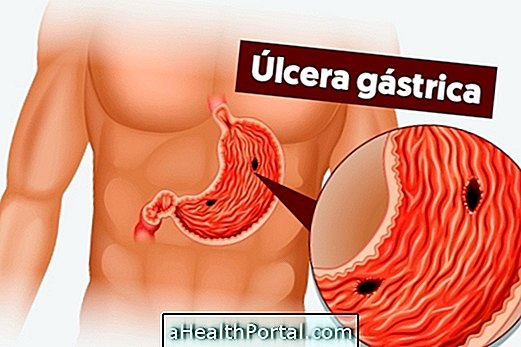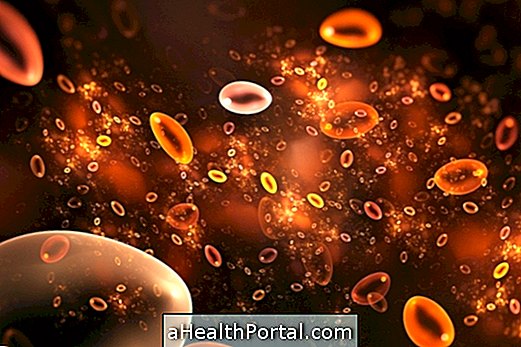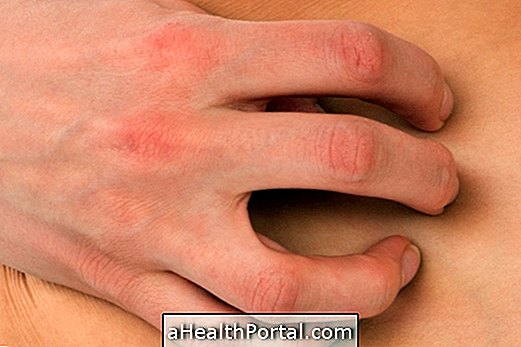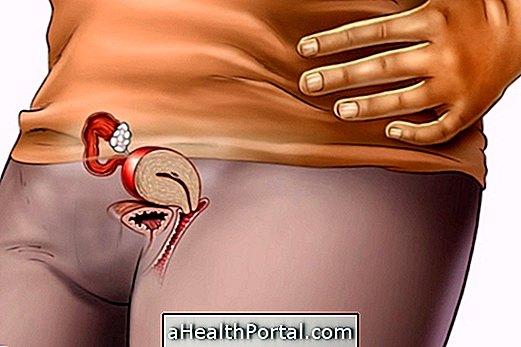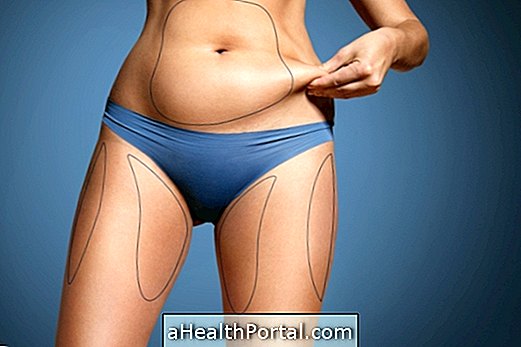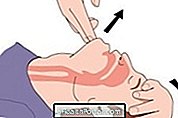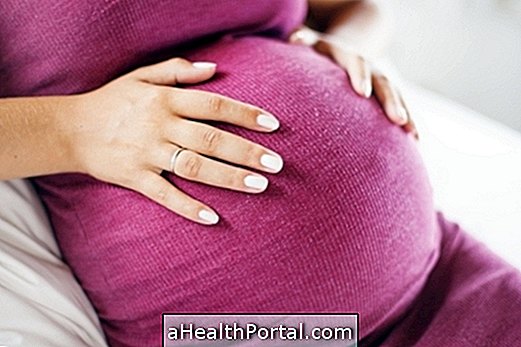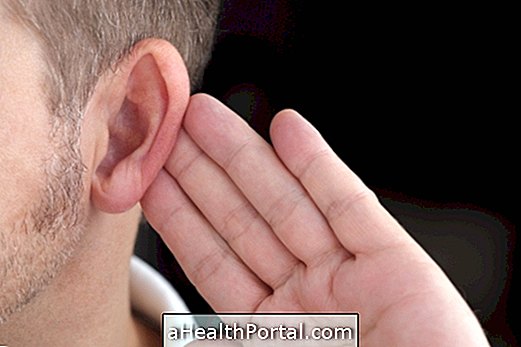The treatment for pulmonary emphysema is done with the use of daily medications to expand the airways, such as bronchodilators and inhaled corticosteroids, indicated by the pulmonologist, being also very important the adoption of healthy life habits, mainly avoiding smoking, besides the accomplishment of respiratory rehabilitation exercises.
Pulmonary emphysema, also known as chronic obstructive pulmonary disease (COPD), is a chronic, unrestored respiratory disease, and its treatment is important in reducing symptoms and reducing worsening of disease, as well as improving health conditions and independence of the affected person. Learn to identify the symptoms of pulmonary emphysema.
In the most severe cases, it may be necessary to use the oxygen mask for a few hours or on a continuous basis, as well as to perform surgery to reduce lung volume or even lung transplantation.
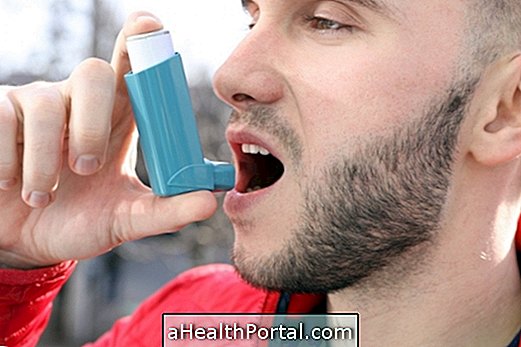
1. Bronchodilators
The use of drugs that dilate the airways are the main form of treatment of emphysema, usually made in the form of inhaled pumps. Some examples are:
- Short-acting beta-2-agonists, such as Fenoterol, Salbutamol and Terbutaline : are used since the earliest stages of the disease and should be inhaled whenever necessary or symptoms worsen;
- Long- acting beta-2-agonists, such as Formoterol and Salmeterol : most commonly used in the intermediate phase of the disease, in which the symptoms are longer, usually used daily;
- Anticholinergics, such as Ipratropium bromide or Tiotropium bromide : are often used in conjunction with beta-2-agonists to potentiate the dilating effect in the lungs;
- Methylxanthines such as Aminophylline and Theophylline : may be an alternative in more severe cases, improving respiratory capacity, however, because it causes many side effects, such as nausea, tremors and accelerated heartbeat, should be used with caution and regular medical follow-up.
The medicament pumps may already be composed by the combination of bronchodilators or in combination with the corticosteroids, to facilitate the use and decrease the number of doses, as in the case of examples such as Seretide or Alenia, for example.
2. Glucocorticoids
The corticoid remedies are mainly used in the inhalation form. Continued use of this medication in conjunction with bronchodilators may reduce worsening of lung function and the risk of complications and should be indicated by the pulmonologist.
They are usually used twice a day, and may already be combined with bronchodilators in the same drug. It is recommended to rinse the mouth after use to reduce the risk of oral infections, such as oral candidiasis.
Compressed corticosteroids are not recommended for continuous use because they cause many side effects and few benefits in the treatment of the disease, and should be used in cases of exacerbation of the disease with infection and may bring benefits for recovery.
3. Pulmonary rehabilitation
It is a physical therapy treatment program that includes exercises to strengthen the chest muscles and improve respiratory capacity, such as exercises for lung expansion, stretching of muscles to breathing, awareness of posture and correct breathing, providing a better ability to perform activities of the day-to-day life. Learn more about this type of treatment.
In addition, it is recommended to perform physical exercises, such as walks with professional follow-up, after medical recommendation, to improve physical fitness, increase breathing capacity and decrease symptoms.
4. Oxygen
The use of an oxygen nasal catheter is indicated only in the most severe cases, where the lungs can no longer supply the oxygenation of the body. They are indicated by the doctor, and may be needed for a few hours or throughout the day.

5. Vaccines
People with pulmonary emphysema are at a higher risk of developing respiratory infections, which should be avoided, both because they become more severe in these patients and because of the worsening of emphysema during seizures.
Therefore, it is indicated that people with COPD receive vaccine against influenza annually, and against pneumococcal infections, avoiding cases of pneumonia and life risks. Flu vaccines may also be indicated annually.
6. Other remedies
N-acetyl-cysteine may be indicated in many cases because of its antioxidant and muco-reducing properties.
Antibiotics may be necessary in case of respiratory infection caused by bacteria, which is not uncommon in patients with COPD.
7. Surgery
Although it is more rare, in some cases more serious, the doctor may advise to have surgery to remove the most affected parts of the lung, allowing healthy regions to expand better and function more adequately, however, this surgery is only done in some very serious cases and in which the person could tolerate this procedure.
Lung transplantation can also be a possibility in specific cases, indicated by the doctor.
Signs of improvement
Emphysema has no cure, so the symptoms do not go away completely. However, if the treatment is done correctly, after a few days you may notice a decrease in almost all symptoms, such as a feeling of shortness of breath, chest pain or cough.
In addition, with treatment, there may be less difficulty in doing activities that have become very tiring, such as walking.
Signs of worsening
Worsening signs are more common in cases where treatment is not appropriate or when the disease progresses and becomes very severe, which is more common in cases where the diagnosis was delayed.
These signs include extreme difficulty breathing, bluish fingers, purplish-colored face, and intense wheezing when breathing. In these cases, it is advisable to go to the hospital immediately to initiate appropriate treatment and avoid serious complications such as cardio-respiratory arrest.
Natural Treatment Option
One treatment for pulmonary emphysema that can be done at home is to learn a physical therapy exercise called a lip balm and perform it several times a day as a way to complement doctor-oriented treatment, never replacing it. To do this, simply breathe deeply and let the air through your mouth with your teeth half open and lips half closed so that you move them with the air that comes out of the mouth.
This simple exercise strengthens the expiratory muscles and helps to completely eliminate air from the lungs, allowing more oxygen to enter the next inspiration, and preferably should be guided by the physiotherapist.
